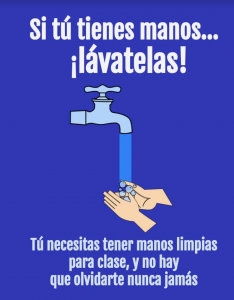 Mastering another language requires careful listening, consistent practice of conversational speaking, close reading of texts, and writing. While some of these fit seamlessly into remote/hybrid learning, Modern Languages faculty need to think creatively about class time and assignments.
Mastering another language requires careful listening, consistent practice of conversational speaking, close reading of texts, and writing. While some of these fit seamlessly into remote/hybrid learning, Modern Languages faculty need to think creatively about class time and assignments.
“Where we’ve had the most success is leveraging universal tools like Google Slides, Schoology, and Jamboard,” said Mark Connolly, Spanish teacher and Upper School instructional technologist. “Instead of using, say, a prefab language app, teachers are making their own materials using those tools.”
In Connolly’s Spanish 4: Topics in Hispanic Culture and Literature class, students started the year with five different readings in Spanish from different Mesoamerican civilizations such as the Maya, Mexica, Triqui, and Teotihuacan. For their assignment, students are creating audio tours of their assigned civilizations in Google Slides, combining audio, photography and writing. They looked not only at the historical legacy but also at the ways these cultures combine to define Mexican identity today.
 In Spanish 2 Honors, Connolly uses Jamboard in a “live” setting, so all students interact on the document together, whether it’s matching vocabulary words to pictures, sorting foods in different categories or looking deeper at structures in Spanish. “It can be a frenzy,” said Connolly, but the interactive nature allows both remote and hybrid students to work together while they learn.
In Spanish 2 Honors, Connolly uses Jamboard in a “live” setting, so all students interact on the document together, whether it’s matching vocabulary words to pictures, sorting foods in different categories or looking deeper at structures in Spanish. “It can be a frenzy,” said Connolly, but the interactive nature allows both remote and hybrid students to work together while they learn.
Spanish 2 Honors students also used unit vocabulary and structures to create public service announcements about healthy habits.
